How to create a wildlife garden on a balcony – garden designers share their top tips for a thriving wildlife-friendly space in a city
It's possible to create a diverse ecosystem even in built-up, urban spaces
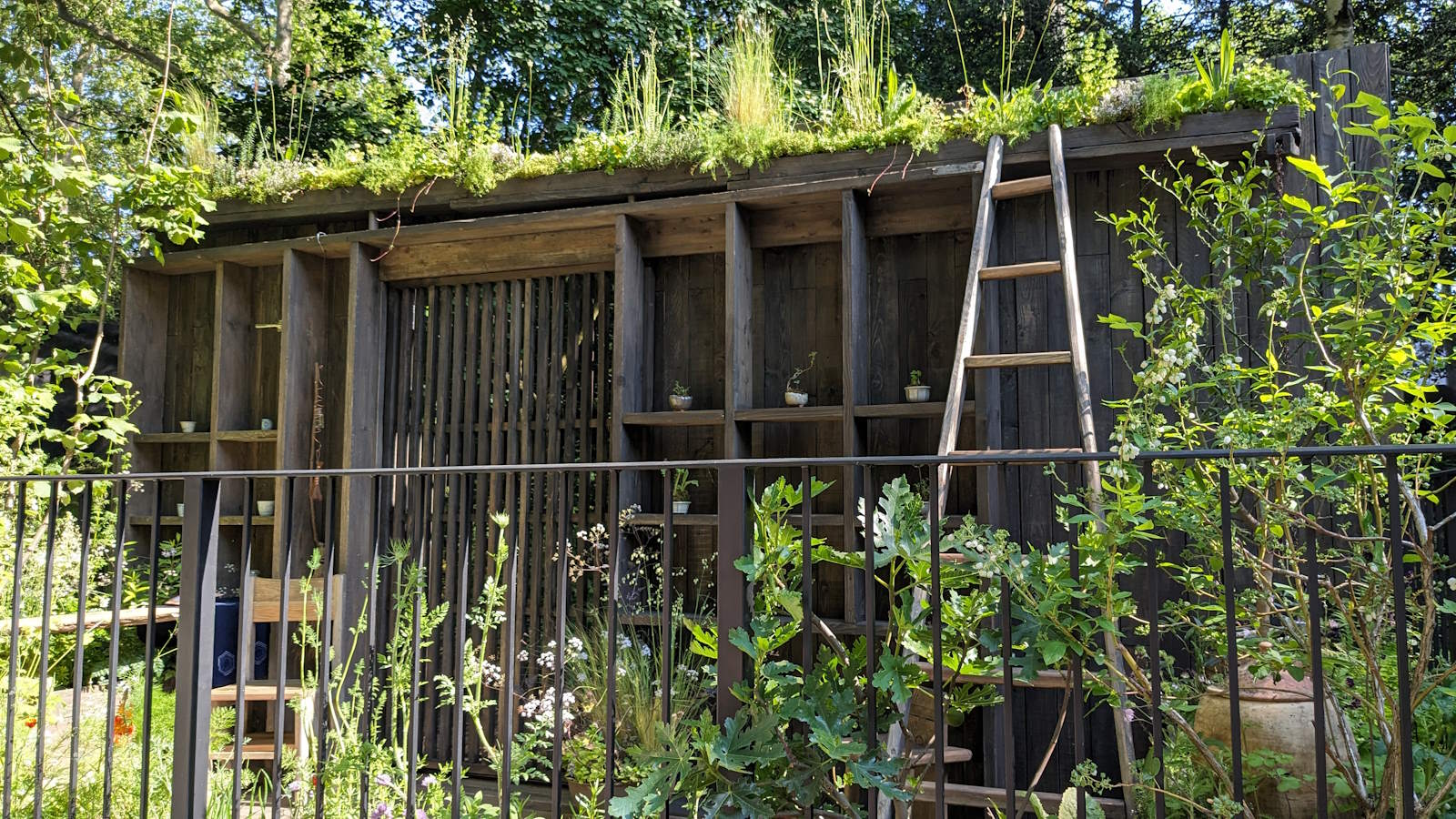

They may be compact, especially if you live in the city, but you absolutely can create a wildlife garden on your balcony. All it takes is thoughtful planting and a few clever design choices, and you'll soon have a thriving sanctuary for bees, butterflies, birds, and other critters on your hands.
One of our very favourite wildlife garden ideas, ensuring your balcony garden idea has a real (ahem) buzz about it isn't just good for the environment; it’s also a beautiful way to bring movement, colour, and life to your outdoor space, however small.
Better still? While many wrongly assume that a naturalistic planting design will look messy and unkempt, nothing could be further from the truth. In fact, whether you have a sun-drenched terrace or a tiny shaded ledge, your miniature haven will actually be ticking off some serious trend points – and look seriously stylish to boot.
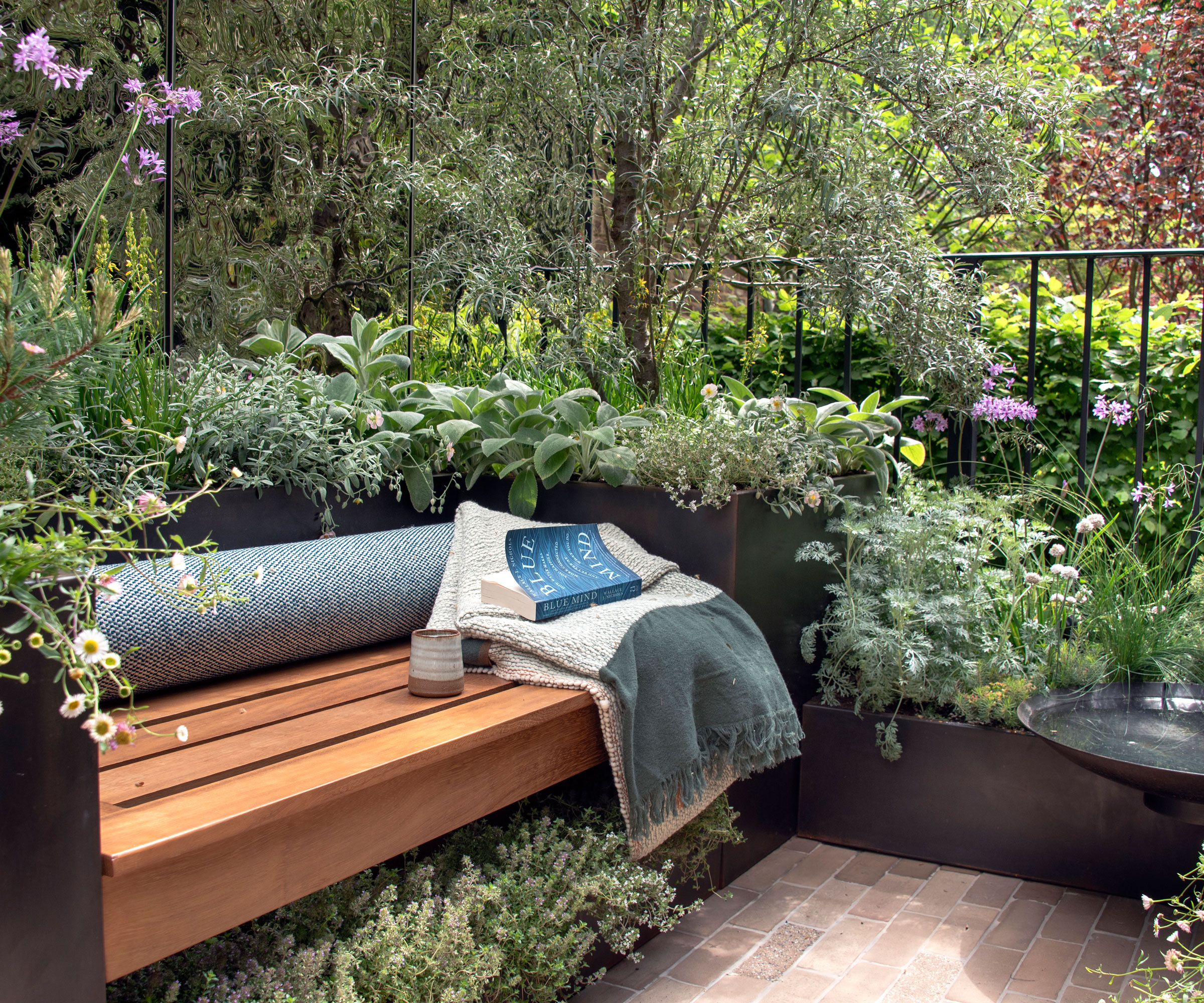
How to create a wildlife garden on your balcony
When you're working with a smaller space, it often feels as if your options are limited.
While learning how to commission a garden designer will help you to see the potential of your balcony, though, there are a few things you can do to transform it into the wildlife garden of your dreams.
1. Start with a vision
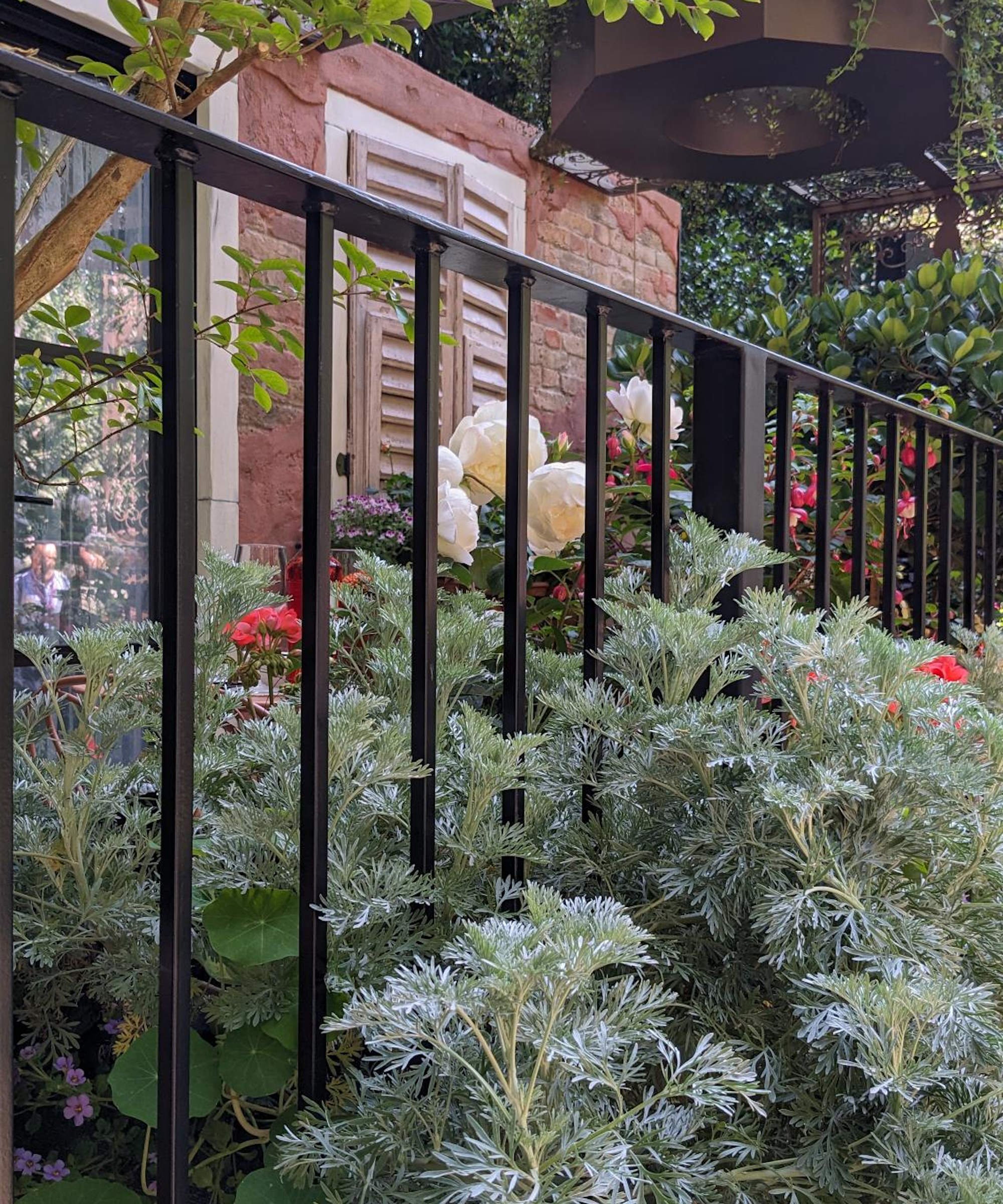
Before you start shopping for plants, look closely at your balcony’s conditions. How many hours of sun does it get each day? Is it exposed to wind? Do you have room for tall pots or trellises?
Understanding these details will help you choose plants that thrive, and wildlife that will feel at home.
Design expertise in your inbox – from inspiring decorating ideas and beautiful celebrity homes to practical gardening advice and shopping round-ups.
'Even in an urban setting, you can recreate natural ecosystems,' says Shireen Zia, an award-winning designer and principal of EcoGardens Landscape Design.
'Think about layering plant heights, adding water, and creating shelter.'

Shireen is an award-winning garden designer and principal of EcoGardens Landscape Design, LLC.
2. Pick the right plants for wildlife
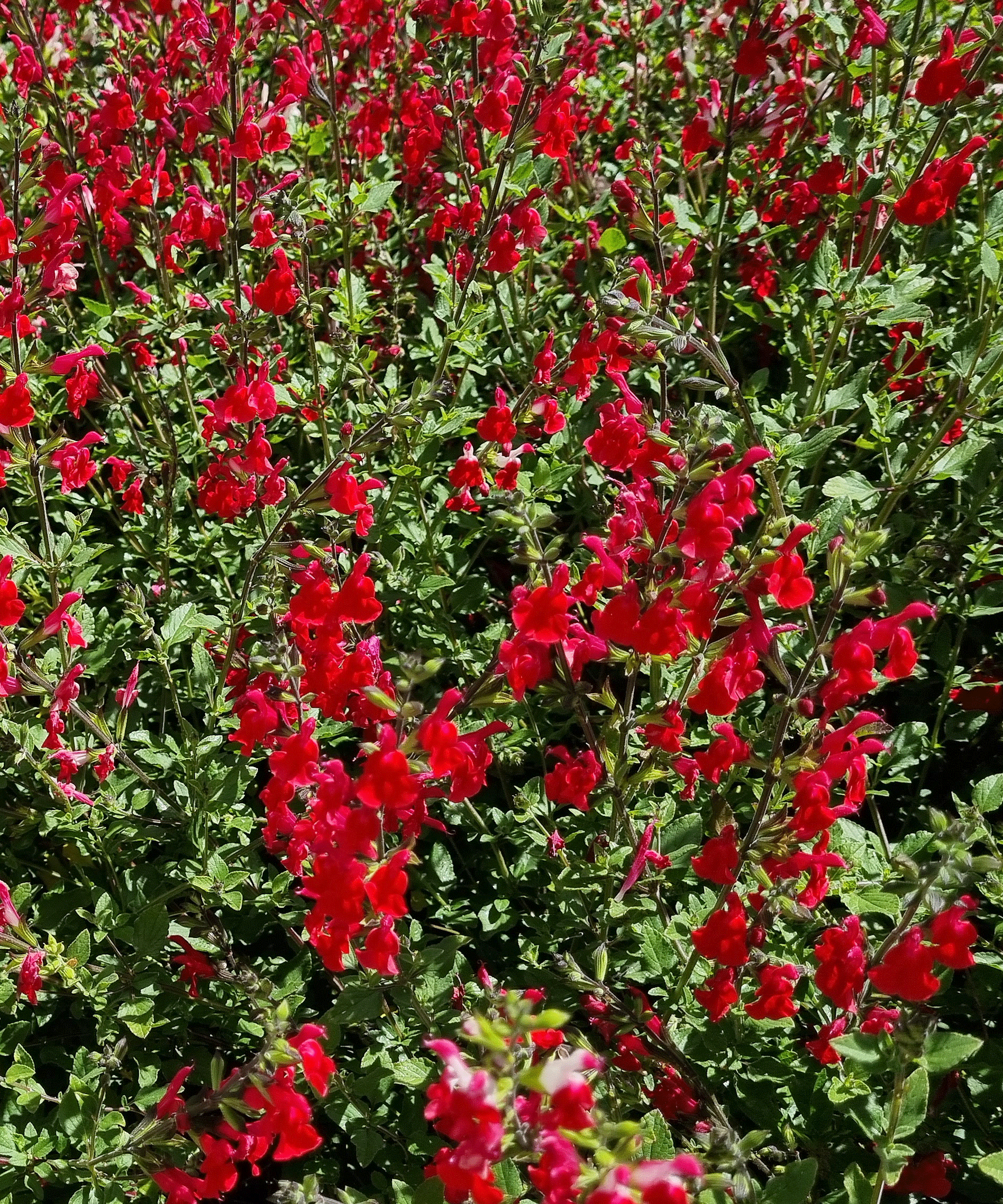
If you're trying to create a wildlife garden on a balcony, know this: not every pretty plant is good for wildlife.
While colourful annuals can be tempting, native plants are often the most beneficial for your local pollinators, birds and insects.
'Native plants provide the precise food sources and habitat needed for complete life cycles,' says Mary Phillips, Head of Native Plant Habitat Strategy at the National Wildlife Federation.
'By supporting local food webs and offering critical shelter, they significantly enhance local biodiversity.'
With this in mind, Andrew Bunting– VP of Horticulture for the Pennsylvania Horticultural Society and author of The Plant Lovers Guide To Magnolias (available on Amazon) – suggests a mix of annuals, perennials, herbs and native species for maximum wildlife appeal.
'Many annuals like petunias, zinnias and salvia will attract a host of insects, and plants with tubular flowers such as salvia will also attract hummingbirds,' he says, noting that 'certain herbs like lavender, rosemary and sage are magnets for pollinators'.
Mary adds that, 'in full sun, salvia is a resilient, low-maintenance choice, such as Scarlet Sage or Salvia greggii. In shadier spots, common violets are easy to grow and provide beauty as well as ecological benefits'.
'Herbs like parsley and dill are also valuable, as they’re host plants for the swallowtail butterfly,' she says.
Planting to attract butterflies and their winged buddies doesn't have to be expensive; you'll find a lovely selection of salvia at Walmart, along with plenty more pollinator-friendly plants.

Mary Phillips is an ambassador for native plants. Her work ensures all habitat programs and resources are rooted in sustainable practices and the latest science.

Andrew Bunting is Vice President of Horticulture and leads the utilization of planting and design to promote environmentally sound gardening practices at PHS. Prior to arriving at PHS, Andrew worked at the Chicago Botanic Garden, Chanticleer Garden, and the Scott Arboretum for a tenure of 27 years, and has received many commendations for his work. In 2015, Andrew published his first book, “The Plant Lover’s Guide to Magnolias.”
3. Embrace layered planting
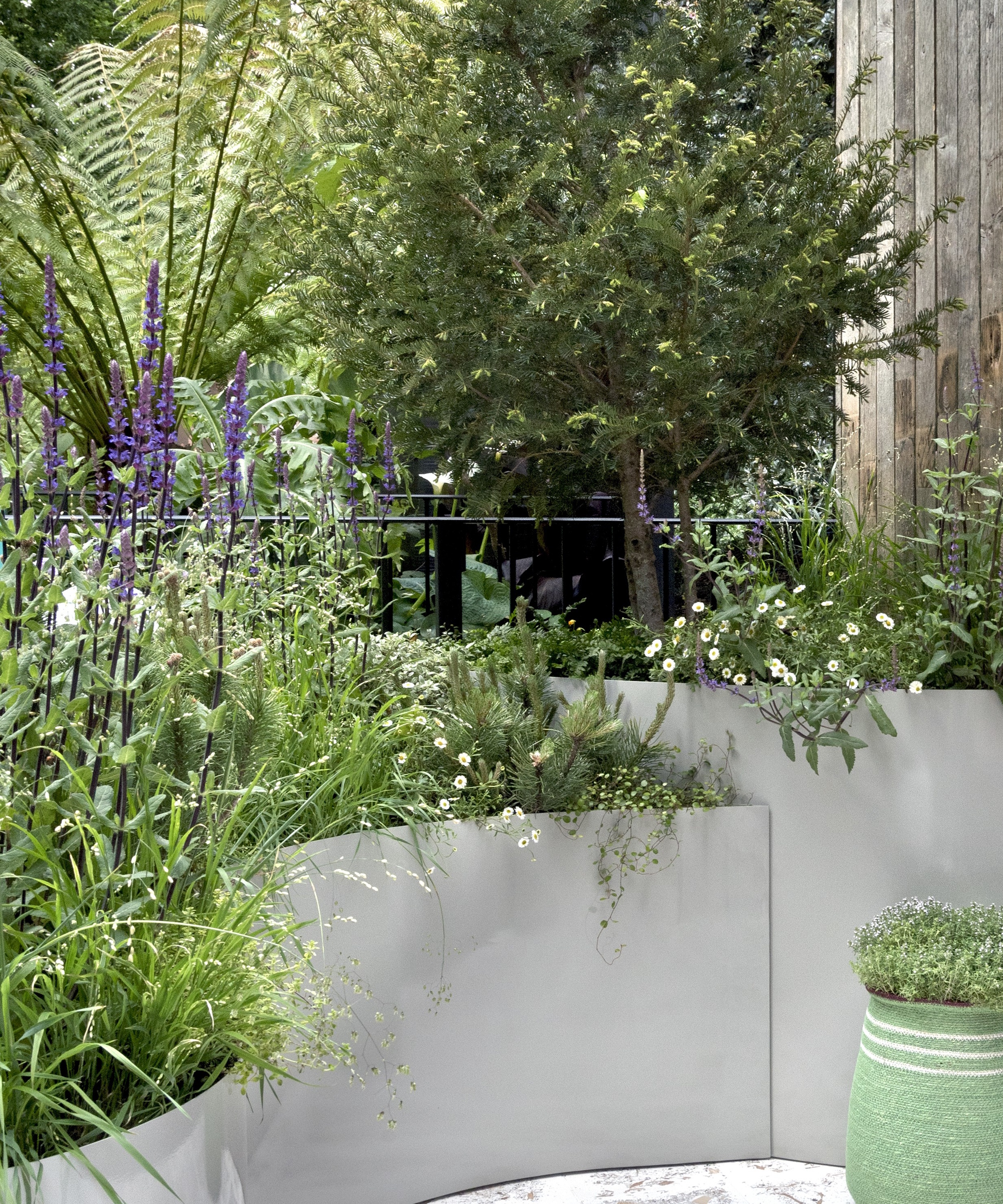
Natural habitats don’t exist on a single level. Trees, shrubs, and ground covers create layers that provide food, shelter, and perching spots for local critters. If you want to create a wildlife garden on your balcony, then, Shireen recommends mimicking this structure – even in pots.
'Layering plant heights mimics natural ecosystems and provides shelter, food, and seasonal interest,' she says. 'On a balcony, the canopy layer could be tall container trees like citrus or dwarf olives. The mid-layer might feature flowering shrubs like Salvia greggii or lavender, while the ground layer could include low-growing natives such as Erigeron karvinskianus or creeping thyme.'
These layers make your balcony visually lush, while supporting a wider variety of insects and birds. Plus, groundcover plants help keep soil cool and moist, reducing your watering needs.
Start small and pick up a packet of Erigeron Seeds - Karvinskianus Santa Barbara Daisy Flower Seed from Walmart.
4. Choose containers with care
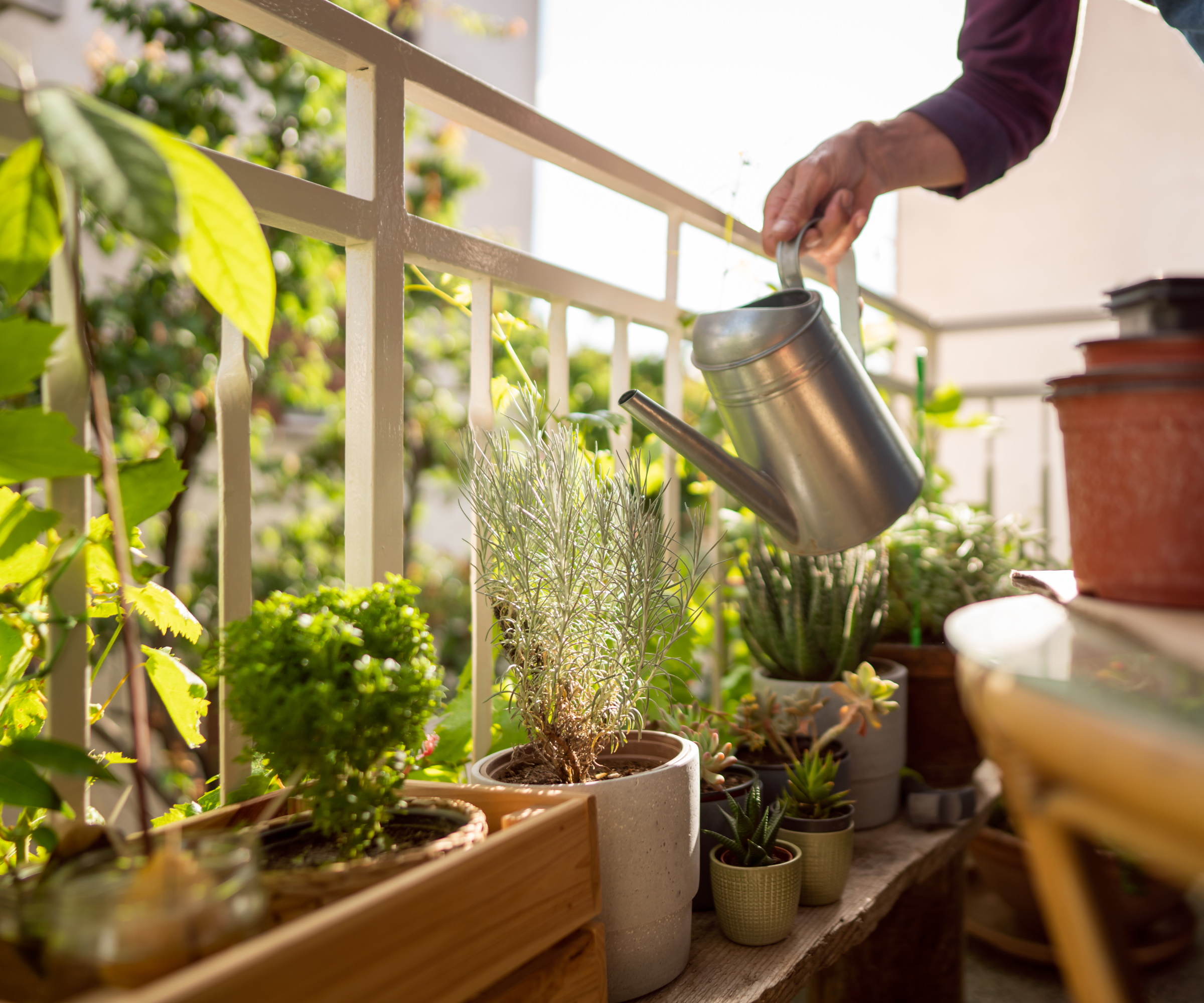
Trying to create a wildlife garden on a balcony will absolutely mean partaking in a spot of container gardening. Remember, though, that not all pots are created equal.
'Select different sizes to allow for larger growth and root expansion of a variety of plants,' Mary advises. 'Many native plants need deep pots; at least 10 inches is ideal.'
Heavier containers made of ceramic or recycled plastic are useful on windy balconies, as they’re less likely to topple. Just remember that clay and terracotta pots (like these from Amazon)dry out faster, while recycled plastic retains moisture longer – a crucial detail for busy gardeners or hot, south-facing balconies.
'Use trellises or stacked pots to create a vertical garden or living wall, mimicking nature's layers,' Mary adds. Planting upwards will also help to maximise space and shelter delicate plants from wind.
5. Plant for continuous blooms
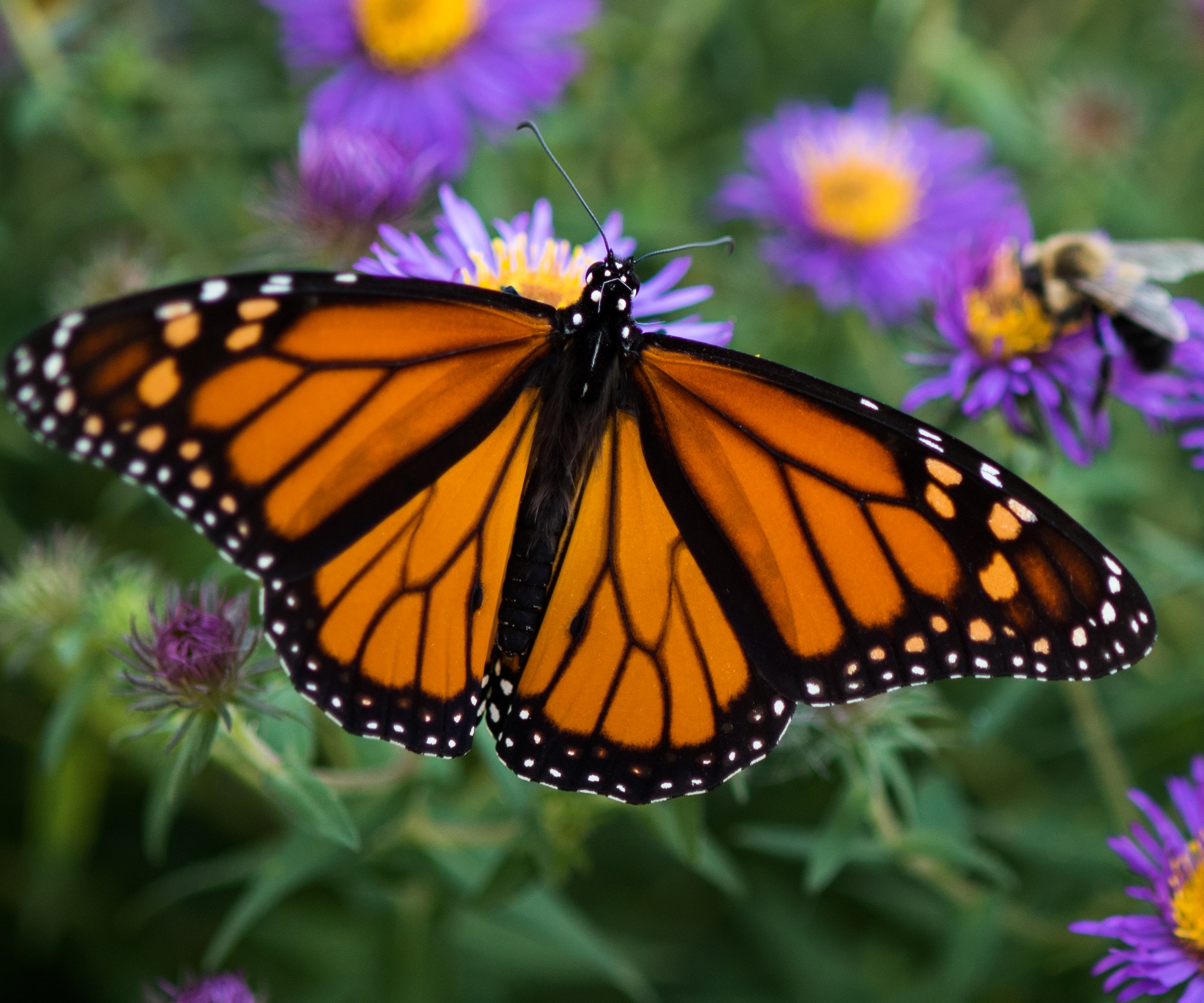
One of the most powerful ways to create a wildlife garden on a balcony is to ensure the space offers food across the seasons. After all, bees, butterflies and birds need nectar and seeds at different times of year.
'Plan for multiple pots that provide resources throughout the seasons,' says Mary. 'This includes nectar, staggered blooming periods, host plants for caterpillars, and shelter for beneficial insects, as well as seedheads and perching spots for birds.'
To that end, Andrew suggests butterfly milkweed (Asclepias tuberosa) – which is hardy in USDA hardiness zones 3 through 9 – as a standout option.
'It’s tough, sun-loving, and attracts monarch butterflies,' he says.
Mary agrees, flagging that it also produces seedheads that feed birds in autumn and winter, and its 'fluffy seed silk is collected by songbirds for nest lining.'
You can pick up a packet of Butterfly Milkweed Seeds at Walmart easily (and cheaply!) enough.
Top tip: everyone forgets them, but moths are useful pollinators, too, and they only come out at night. Plant white blooms to help them on their way and create a moon garden.
6. Just add water

If you really want to do your bit for nature, remember that urban wildlife often struggles to find clean water. And, while your garden pond ideas may not be suitable, even a tiny water feature can help – it doesn’t need to be elaborate.
'Water is essential for wildlife, and even the smallest feature helps,' Shireen says. 'A shallow saucer filled with pebbles and fresh water is perfect for bees. Hang a small birdbath with a gentle dripper, or use a rain garden tray to catch overflow from watering and create a tiny wetland habitat.'
If you have the space, something like this Mademax 1W Solar Bird Bath Fountain Pump from Amazon will ramp up the zen points of your outdoor space. Just remember to keep water features clean and refresh them often, especially in hot weather.
7. Think beyond flowers
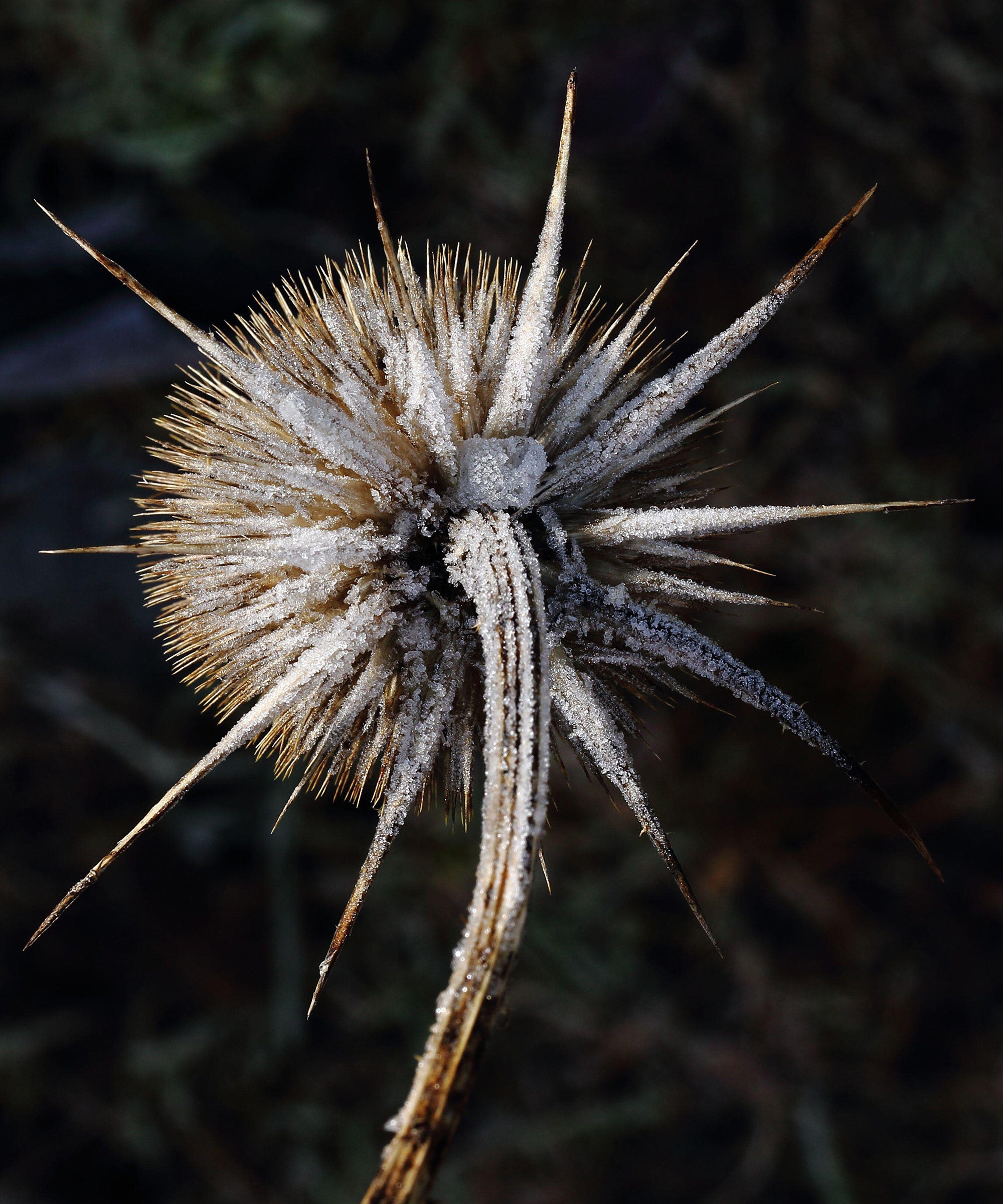
Learning how to create a wildlife garden on a balcony means thinking about more than just blooms. Birds and insects also need shelter, food sources like seeds, and places to hide.
'Urban container gardens can collectively connect fragmented habitats and resources, forming vital green corridors,' Mary explains. 'Even a small balcony garden acts as a vital refuelling station for pollinators, migrating insects, and birds.'
Andrew agrees that even one pollinator-friendly plant can make a difference.
'Many annual plants like salvia, lantana and zinnias will bloom profusely in full sun and last from mid-May through to frost,' he says. 'Planting even one of these ensures a great pollinator habitat throughout the summer.'
Whichever you opt for, consider leaving some plants to go to seed in autumn rather than cutting them back immediately. Seedheads provide food for birds during the colder months, and add sculptural beauty to winter balconies.
8. Go chemical-free
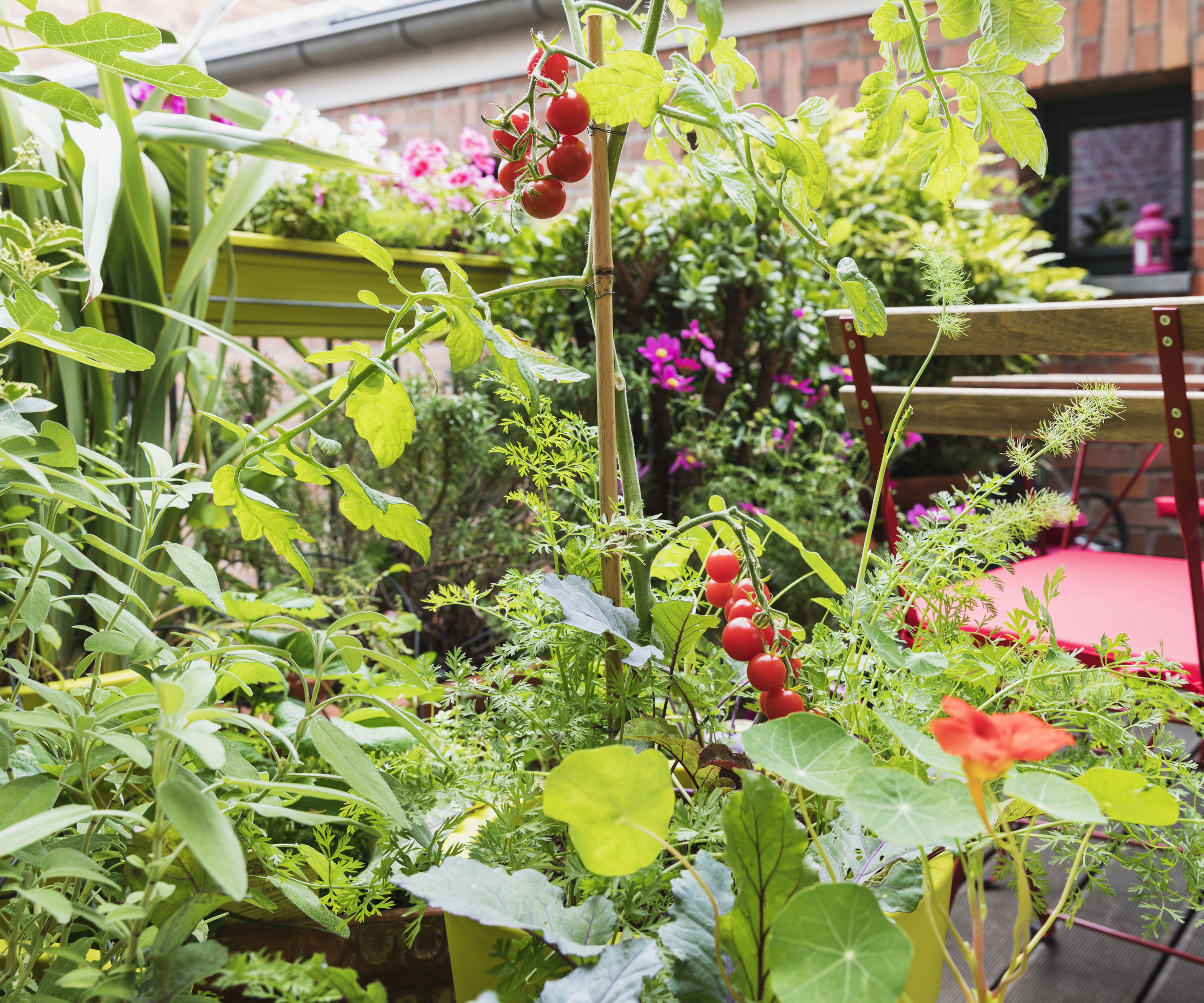
Balconies are enclosed spaces, so it’s crucial to avoid toxic chemicals that can harm beneficial insects or birds.
'Prioritise organic practices,' Shireen advises. 'Avoid pesticides, even organic ones, unless absolutely necessary. Encourage biodiversity to reduce pest outbreaks naturally.'
Companion planting, such as marigolds alongside tomatoes, can help deter pests without harming pollinators. And remember, a few chewed leaves or blemished petals are signs of a healthy ecosystem rather than a problem to fix.
'Accept minor damage,' Shireen adds. 'Chewed leaves and natural decay are signs of a healthy food web.'
9. Use the right soil
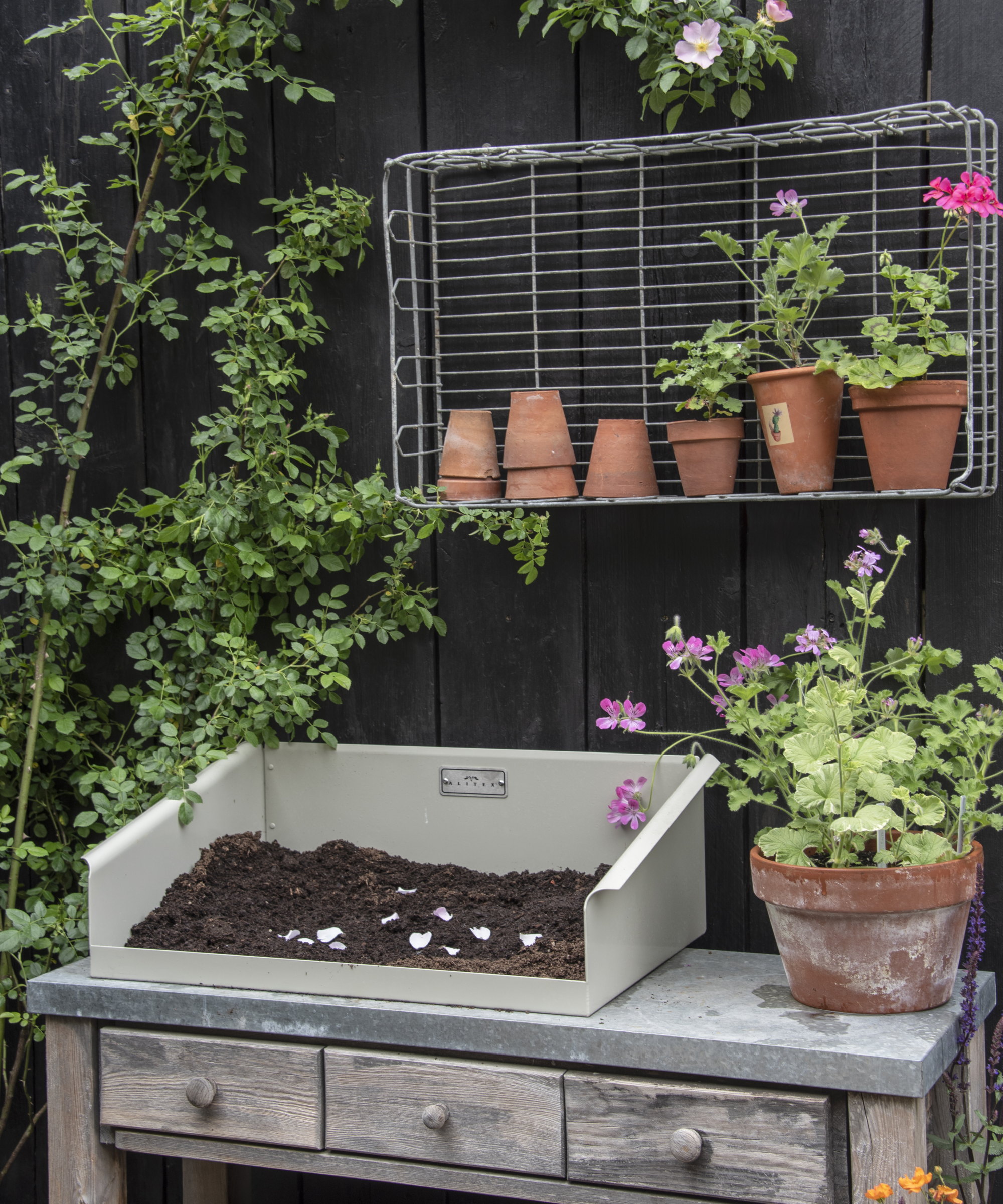
If you want to create a wildlife garden on a balcony that really does what it says on the tin, Mary suggests you prioritise soil health by using ‘an organic, well-draining potting mix’.
‘Native plants don't require extra fertilizer,’ she says, noting that ‘soil calculators are available online to determine the amount you will need to fill your pots (and avoid unnecessarily carrying extra bags upstairs!)’.
Try something like the 6-in-1 Soil Test Kit from Amazon to do exactly this.
On this same note, Shireen says it's important to accept minor damage. 'Chewed leaves and natural decay are signs of a healthy food web,' she points out, urging gardeners to avoid reaching for pesticides or harsh chemicals.
'If intervention is needed, use organic soap and water spray for aphids, or try neem oil or horticultural oil to manage common insect infestations.'
FAQs
What are the benefits of even a very small wildlife garden?
Creating a wildlife garden isn’t just about helping bees and birds. It can also bring tremendous joy and wellbeing for you. Watching butterflies hover around lavender or hearing a goldfinch chirp as it lands on a seedhead connects you to nature, even in the middle of the city.
'Access to even a small green space can significantly boost human well-being,' says the Natural Wildlife Federation's Mary Phillips.
Gardening itself has been shown to reduce stress, improve mental health, and offer a creative outlet. And there’s nothing quite like stepping outside to pick a sprig of rosemary or watch bees busily working among the blooms.
Andrew Bunting of the PHS adds: 'Within a city, it is important to create small gardens for insects and birds alike as they travel through the city. These small spots will provide refuge and feeding spots for nectar-hungry insects and birds.'
How do I attract birds to my balcony?
While prioritising native plants with seedheads and long flowering seasons is a great start, you can also attract birds to your balcony by investing in a bird feeder like this Premium Deck Railing Bird Feeder Tray for Balcony from Amazon.
Keep it packed to the brim with treats (peanuts or hulled sunflower seeds are best) and take care to clean it regularly with hot soapy water.
Let it dry thoroughly before refilling, and don't forget to provide a source of clean water for your new feathery friends, too.
If transforming your balcony into a mini nature reserve feels overwhelming, start small. Plant flowers that attract bees, for example. Choose a single pot of lavender or a window box of zinnias. Add a birdbath or try feeding birds in winter. Leave some seedheads standing through winter.
Honestly, even the smallest gestures can make a difference, so don’t wait for a sprawling garden. With a few pots, thoughtful planting, and an eye for nature, your balcony can become a precious part of the urban ecosystem, and a beautiful retreat for both wildlife and you, too.

Kayleigh Dray is an experienced writer and editor within the world of digital journalism. She writes for Homes & Gardens on a range of gardening topics, from chicken keeping to landscape design. She is currently giving her own backyard a woodland-inspired makeover – and there have been whispers of a vegetable plot, too.
You must confirm your public display name before commenting
Please logout and then login again, you will then be prompted to enter your display name.